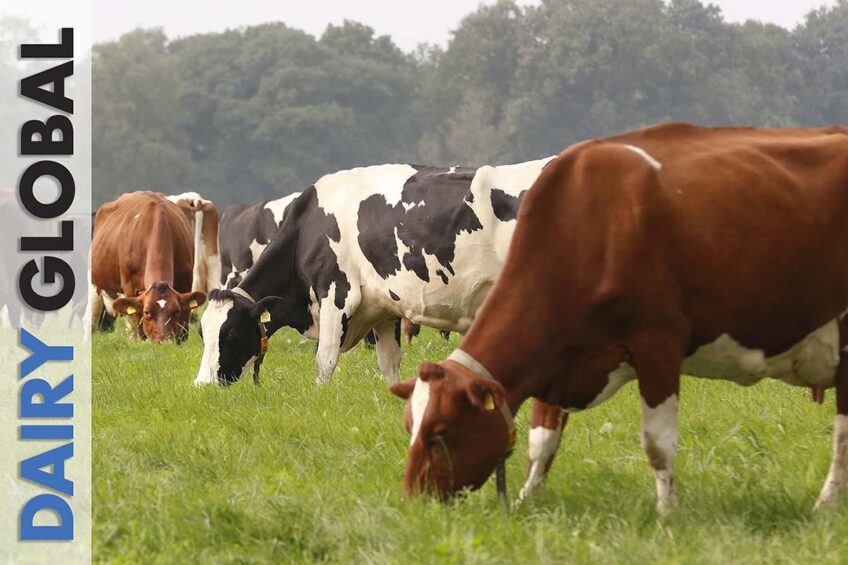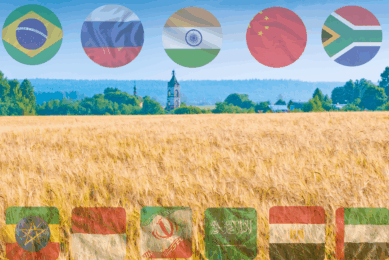Magazine edition 1: A dairy journey from Switzerland to Thailand

This edition takes a closer look at udder health and the road to zero mastitis on-farm. We also take a journey to Thailand and Switzerland to explore the dairy sectors there. Don’t miss this edition!

The road to zero mastitis
Monitoring udder health on a dairy farm is essential for many reasons. We spoke to 2 experts from the Faculty of Veterinary Medicine at Ghent University in Belgium, Professor Sarne de Vliegher and visiting professor Dr Sofie Piepers, about udder health and significantly reducing the incidences of mastitis.
Cost-effective cooling for outdoor cows
A published study demonstrated the effectiveness, both in terms of cost and heat stress reduction, of extending cooling strategies for dairy cows throughout the day and night using a novel outdoor use of ducted air systems that could be applied to outdoor herds where there is limited physical infrastructure.
A farm facing unique challenges in the Swiss Alps
Milking cows at high altitude in the Swiss Alps presents its own set of unique challenges – and watching out for wolves is high on the agenda for dairy farmer Rebeca Gerber. Along with her partner Domenico Margreth, the 2 people milk 25 Brown Swiss cows on their farm at Lenzerheide, a popular ski resort in the Alpine Valley in eastern Switzerland.
Save time and enhance sustainability with robotic feeding
Feeding is one of the main costs on a dairy farm and the most labour-intensive activity after milking. Therefore, to meet the growing demand for milk and meat products, farmers need to apply advanced technologies in dairy feeding systems while considering farming productivity and sustainability and ensuring high standards of animal health and welfare.
Spotlight on the Canadian Dairy XPO
The much-anticipated Canadian Dairy XPO will again take place in April this year and boasts its 10th year. Dairy enthusiasts will visit Stratford, Ontario, to indulge in the new technologies and innovations to be showcased. In this Q&A, Jordan Underhill, CEO and founder of the Canadian Dairy XPO, gives some insights into what we can expect at the event.
Successfully reducing carbon emissions
It should be no secret that a major push is underway in the animal nutrition industry to develop products, programs and practices that will significantly reduce the CO2eq emissions of livestock. While much progress has been achieved, there is still a long way to go to achieve the objectives that various government and consumer groups have established as obtainable targets.
How is Thailand coping with increased dairy demand?
 Demand for liquid milk in Thailand surged to new heights in recent years, leaving the country with a considerable deficit of home-produced dairy products. As Thailand continues to prosper, its middle-class population is growing fast and with that, demand for dairy produce is increasing, too. Thailand is now ranked as the 12th largest dairy export market in the world.
Demand for liquid milk in Thailand surged to new heights in recent years, leaving the country with a considerable deficit of home-produced dairy products. As Thailand continues to prosper, its middle-class population is growing fast and with that, demand for dairy produce is increasing, too. Thailand is now ranked as the 12th largest dairy export market in the world.
Schothorst looking for international growth
New director of Schothorst Feed Research, Jan Kamphof, aims to improve profitability and increase the number of international customers: “At Schothorst, we test results in practice. Customers really appreciate that.”
Accelerating regenerative dairy farming
Regenerative agriculture aims to provide a way to adapt to a changing climate by regenerating landscapes while meeting the social and economic needs of farmers and their communities, that is, balancing the interests of farmers, society and the environment. This report, which is based on several studies, highlights how to accelerate the adoption of regenerative dairy farming.
Tolerance to heat stress improves oocyte and embryo production
Heat stress is a major concern in dairy cattle production systems. Heat-stressed cows experience changes in hormonal balance, maternal transcription, and oocytes and early embryo development, leading to reduced reproductive performance. This article will discuss heat stress impacts on oocytes, embryo, foetus, milk yield, and milk quality to emphasize on the importance of tolerance to heat stress.
The global dairy market is transitioning
 The global dairy market is transitioning to the next phase of the cycle. “There is growing evidence that the bottom in the dairy commodity markets has been reached and the general trend is for prices to move higher through 2024,” according to Rabobank in a new global dairy report. As 2023 drew to a close, the global dairy market continued to walk a tightrope of limited new milk and sluggish demand, senior dairy analyst Michael Harvey of Rabobank says.
The global dairy market is transitioning to the next phase of the cycle. “There is growing evidence that the bottom in the dairy commodity markets has been reached and the general trend is for prices to move higher through 2024,” according to Rabobank in a new global dairy report. As 2023 drew to a close, the global dairy market continued to walk a tightrope of limited new milk and sluggish demand, senior dairy analyst Michael Harvey of Rabobank says.
Join 13,000+ subscribers
Subscribe to our newsletter to stay updated about all the need-to-know content in the dairy sector, two times a week.










